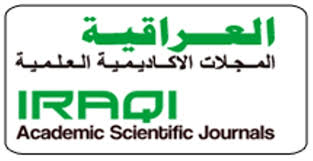The impact of Mesopotamian myths on the drawings of Al-Wasiti
DOI:
https://doi.org/10.59767/bfj.5300.1981Keywords:
Maqamat, Ishtar, Spirits, Assyrian, paintingAbstract
Al-Wasiti's drawings are the first attempt to document the Arab landscape more than 778 years ago. These drawings were associated with a fine literary material, and the relationships between words and poetic sentences are matched by artistic, aesthetic and color relations in drawing, as they are all outputs of a sense that agreed in creativity and differed in the language of expression. Al-Wasiti was creative in drawing these events. Islamic painting has a goal that differs from the goals of the painting arts that preceded it or its contemporary, as it tends to “beautification” only. This is achieved by true copying from nature, just as it is achieved by drawing what is transmitted from nature, transforming and refining it. The shocking and ambiguous thing in these (Maqamah), especially in the thirty-ninth (Maqamah), He dared to draw a woman going through labor, revealing her body parts with a clear frontal drawing & we find that it exceeded what is expected of a Muslim painter. In another drawing from this (Maqamah), we notice the presence of strange beings that distort the human form and link it to some ancient Mesopotamian myths.
After doing research to try to find the origin of these strange beings, the researcher reached the Mesopotamian origin of these figures (Ishtar and the Bird of Spirits), which go back to the Assyrian antiquities with ancient Babylonian roots.
References
Agha, T. (2008). Painting is poetry and poetry is painting. civil dialogue , 2469.
AL-ISSA, M. (2001, 7 15). Maqamat Al-Hariri & Al-Wasiti. Retrieved 10 24, 2022, from whisperingdialogue: https://whisperingdialogue.com
Al-Maamari, B. M. (2016). Plastic and social visions in the pictorial paintings in the Omani (Maqamat) of Al-Hariri. Amman Jordan: The Jordanian Journal of Arts, Issue 9.
Al-Majidi, D. K. (2021). Civilization of the Arameans and its manifestations. Civilization of the Arameans and its manifestations (p. youtube). Holland: Aramaic (Mandaean) Society.
Al-Majidi, D. K. (6/1/2021). The Epic of Gilgamesh: History and the Eternal Return. Family of writers and writers in Bahrain (p. a lecture). Bahrain: https://www.youtube.com/watch?v=zVOK3Iu9MN0&t=5315s.
Al-Saad, I. (2010). Beauty in the Al- Wasiti. United Arab Emirates: Al Rafid Magazine. Department of Culture and Information.
Al-Skafi, D. H. (2009). Miniatures: an amazing visual presence. London: Diaspora Magazine (Al-Mahqar).
Baqer, D. T. (2006). The Epic of Gilgamesh, the Eternal Odyssey of Iraq. Baghdad, 6th edition: Al-Warraq Publishing House.
Ettinghausen, R. (1974). The Art of Photography in the Arabs. baghdad: Al-Adeeb.
Haidary, B. (1995, 1 1). Al-Wasiti drew his shrines, so the whole drawing was shortened. Nizwa, Muscat , No:2.
Novák, D. M. (2022, 7 1). Tell Halaf. Retrieved 11 14, 2022, from assyrian : http://www.grabung-halaf.de/currenttexts.php?l=eng
Painting and poetry. (2022). Riyadh newspaper , web page.
Downloads
Published
How to Cite
License
Copyright (c) 2023 Areej Saad Adnan Al - Hindawi

This work is licensed under a Creative Commons Attribution 4.0 International License.







